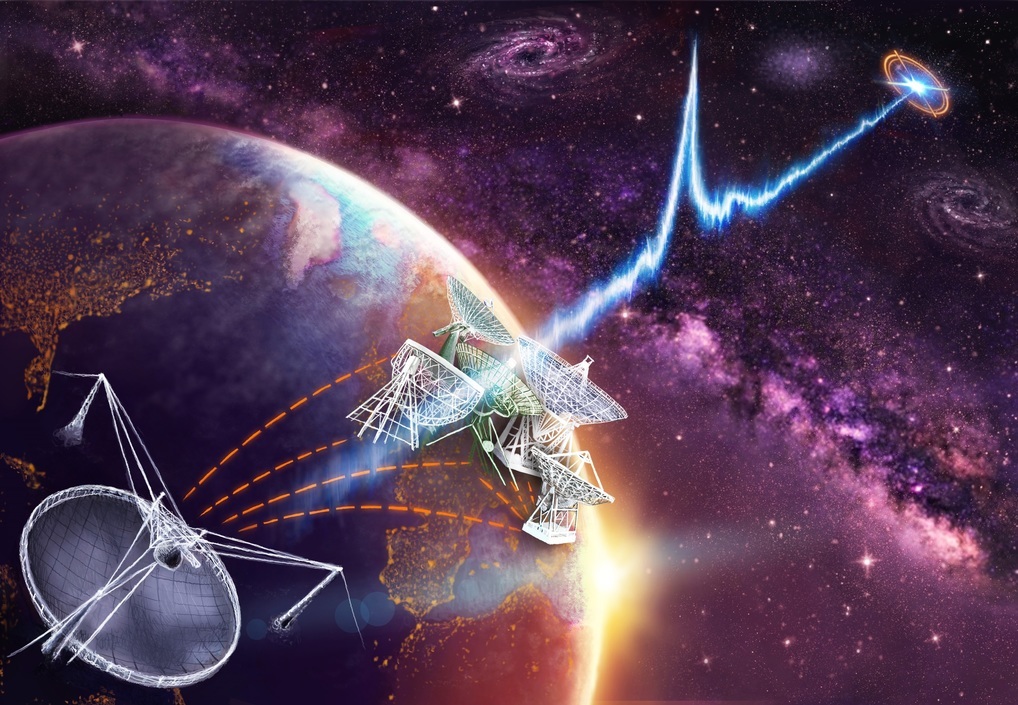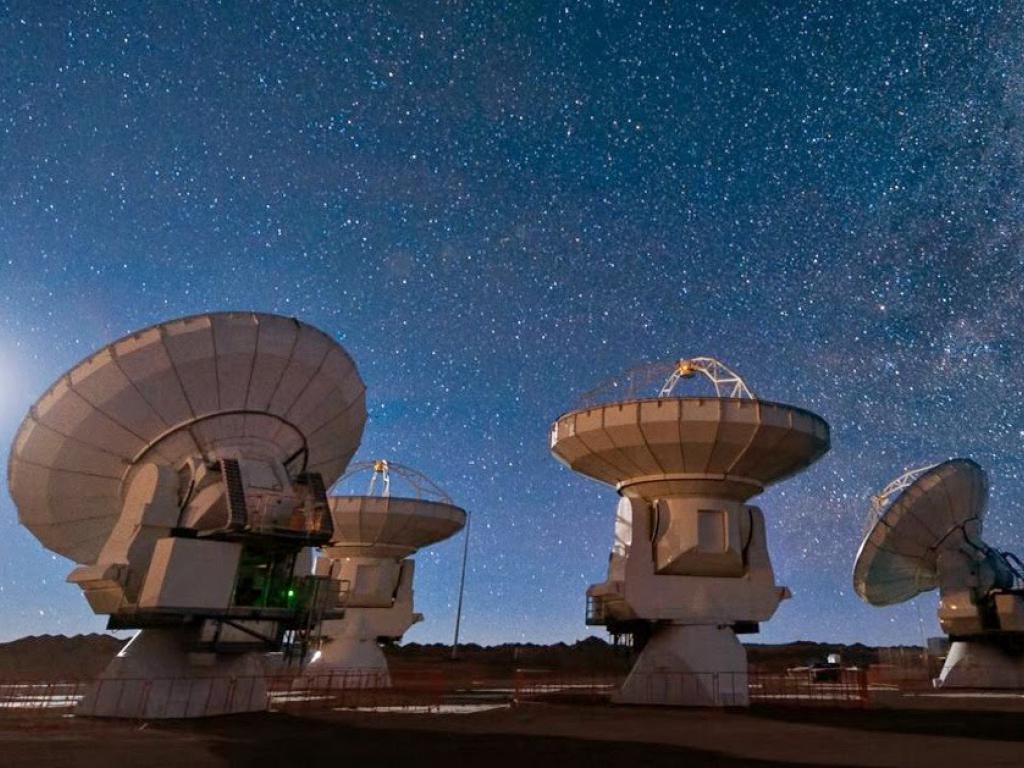Astronomers have clarified the location of the source of repetitive fast radio bursts

Geektimes regularly publishes materials on the so-called Fast Radio Burst, FRB. So scientists call single radio pulses, the duration of which is only a few milliseconds. Moreover, the nature of these impulses is unknown. They were discovered not so long ago - in 2007. And until now, they are a mystery that scientists can not solve.
Now, experts were able to localize the source of radio bursts using the Very Large Array (VLA). This is a composite radio telescope of 27 radio telescopes that work as a single multi-vibrator complex antenna. In fairness, it should be noted that in 2012, scientists already determined the approximate location of the source of these strange radio signals, but now its location has been able to be localized much more accurately, improving accuracy by a thousand times.
Unfortunately, the nature of the signals could not be clarified even now. The main problem is that these radio signals do not repeat, so it was not possible to find out exactly which region of the Universe they came from. Accordingly, the nature of these radio signals is difficult to clarify, because if it is not clear where they come from, it is impossible to find out what is their source. There are many assumptions, one of them is quite believable. We are talking about colliding neutron stars, which subsequently destroy each other, giving just such a signal.
Earlier it was suggested that the signal source could be something on Earth, and in general all this hype is something like registration of microwave radiation, as previously reported. In April 2015, an article on the nature of peritons, the type of fast radio pulses detected only at the Parks radio telescope, appeared in the archive of electronic preprints arxiv.org. It turned out that almost all such impulses are artifacts. They were observed at certain positions of the Parks radio telescope at the time of violation of the operating rules of one of the two microwave ovens in the kitchen for employees and in the visitor’s room, namely, early opening of the door before completion of work. But this explanation is not suitable for all fast radio flashes, since the signals are recorded simultaneouslyGreen Bank radio telescope at a frequency of 2 GHz and Arecibo radio telescope at a frequency of 1.4 GHz.
In March 2016, scientists first discovered repeated radio bursts. This, according to experts, were the first FRBs outside our galaxy and the first FRBs that came constantly from the same source. Previously, the source signals were recorded in 2015. The registration of radio signals was performed thanks to the Arecibo telescope. Archival data helped to find out that the oldest signals from this place were recorded in 2012.

Over the past six months, scientists have spent about 83 hours of time on the Very Large Antenna Array to observe the source of the radio signals. During this time, he gave 9 signals, which, as mentioned above, were also recorded by the Arecibo radio telescope. Unfortunately, no periodicity was identified. Otherwise, scientists could understand what is the source.
New observations have confirmed that the FRBs being registered now are coming from outside our galaxy. Rough estimates show that the source is located at least 5.5 billion light-years from us, and possibly even further.
So what is the source?
The authors of the current study argue that the source, most likely, may be the core of a galaxy. Perhaps, experts say, radio signals appear as a result of the activity of a supermassive black hole located in the center of this galaxy. It itself is small in size, and its mass should not exceed a billion solar masses. This is comparable to the size and mass of the Small Magellanic Cloud, one of the small satellites of our Milky Way. We cannot see the source of recurring FRBs.
Scientists suggestthat during the emission of energy supplying the FRB, radiation from other ranges (including visible light) can also go into space. In this case, using a conventional powerful telescope, you can detect the source of the flash. True, when detecting FRB, telescope lenses must be immediately pointed at the source to fix possible radiation of other types.
Another source of radio signals was detected in 1,500 light years from the source mentioned above. It is not yet clear whether these are interconnected elements, or even the same object. Most likely the latter, since we are talking about very large distances and the equipment simply can not show sufficient accuracy. Or maybe the measurement data are correct, and we observe the interaction of a closely spaced neutron star and the center of a dwarf galaxy.
There is a possibility that an object or objects generate radio signals much more often than those that we fix. Just the strength of the other signals is less, and the equipment is not able to register them. “We are considering all the options without giving priority to any of the possible explanations,” the project representatives say.
Perhaps in the near future, astronomers will still be able to figure out what kind of source of regular FRB we are observing now. This will be facilitated by more accurate equipment being developed now, plus the involvement of new specialists in solving this problem.
There is, of course, another possibility - that these signals are generated by a certain civilization remote from us. But in this case, we can still assume that the source of FRB are some natural objects - the same neutron stars.
DOI: doi: 10.1038 / nature20797
